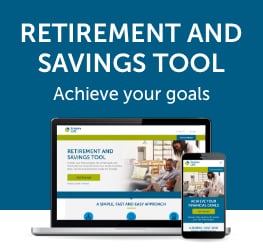
The outbreak of COVID-19 is having a significant impact on all Canadians. According to a Mar. 25th news release by the Dept. of Finance, "The Government of Canada is taking strong, immediate and effective action to protect Canadians and the economy from the impacts of the global COVID-19 pandemic. No Canadian should have to choose between protecting their health, putting food on the table, paying for their medication or caring for a family member."
What's available from a monetary perspective to provide relief to Canadians?
|
This taxable benefit is available to any Canadian who has stopped working for 14 days due to COVID-19.
This taxable benefit is available to any Canadian who has stopped working for 14 days due to COVID-19. First time application qualifiers will not receive earnings for the 14 days in a row for the application period, from employment or self-employed income, or benefits related to maternity or paternity leave.
The program pays $2,000 per four week period (same as $500/week) to workers who wouldn't otherwise be eligible for Employment Insurance.
The program pays $2,000 per four week period (same as $500/week) to workers who wouldn't otherwise be eligible for Employment Insurance. That includes wage earners, contract workers, or self-employed individuals; those who've had to stay home without pay to self-isolate or care for loved ones, in other words for individuals subject to quarantine; and anyone else who hasn't been permanently laid off, but has stopped receiving paycheques. The program covers workers who had been working full-time, part-time or were on contract and are not receiving income due to disruptions to their work situation because of COVID-19. Enhancements and expansion of coverage continues. The most recent examples as of mid-April extend benefits to seasonal workers and people who make less than $1,000 a month due to reduced work hours or part-time work.
Wages include non-eligible dividend income for business owner operators, like dividend income eligible for the federal small business tax rate. This benefit program doesn't apply to the public sector (eg. hospitals, schools,municipal and local governments). An April15th announcement shared that the federal government will work with provinces and territories to temporarily top up wages of essential workers who earn less than $2500 per month. Details will follow.
Any Canadian who has stopped working or will stop working for a 14-day period due to COVID-19 can qualify for the new benefit, which covers a period of up to 16 weeks.
Any Canadian who has stopped working or will stop working for a 14-day period due to Covid-19 can qualify for the new benefit, which covers a period of up to 16 weeks. It is currently available for working Canadians affected by the economic impact of the pandemic from Mar. 15-Oct. 3, 2020. That period may change as the situation develops. That said, there are some qualifiers on eligibility.
An "eligible worker" for this benefit must be a Canadian resident at least 15 years of age, did not quit their job voluntarily and are not receiving Employment Insurance benefits from Service Canada for the same application period. That worker must have been someone who for the year 2019 or the 12-months preceding the day they apply, has a total income of at least $5,000 from self-employment, employment, certain Employment Insurance benefits, or maternity/parental benefits.
Canadians who are already receiving Employment Insurance regular and sickness benefits as of today would continue to receive their benefits and should not apply to the Canada Emergency Response Benefit.
As announced by the federal government, Canadians who are already receiving Employment Insurance regular and sickness benefits as of today would continue to receive their benefits and should not apply to the Canada Emergency Response Benefit.
If their Employment Insurance benefits end before October 3, 2020, they could apply for the Canada Emergency Response Benefit once their Employment Insurance benefits cease, if they are unable to return to work due to COVID-19. Employment Insurance weeks are suspended while approved applicants are receiving the Canada Emergency Response Benefit. Canadians who have already applied for Employment Insurance and whose application has not yet been processed would not need to reapply.
Benefit payments are for 4 week periods.
Benefit payments are for 4 week periods. It's conceivable that there could be 2nd and subsequent application qualifiers who are still not working because of COVID-19 related reasons, keeping in mind that benefits don't automatically last for 16 weeks. In these circumstances, eligible Canadians will be those not receiving or expecting to receive earnings exceeding $1000 from employment or self-employed income, or benefits related to maternity or paternity leave for the 4 week application period for which they seek benefits.
Some Canadians applying for the Canada Emergency Response Benefit for the first time are not sure where to apply. Go to the Canada Emergency Response Benefit page on the Government of Canada website and answer the questions under Get Started. They will be directed to the service option that best fits their situation.
Applications were opened online and by phone on Monday, April 6. Payments were originally scheduled to arrive within five business days for direct deposits and within 10 business days for cheques by mail. Now, you can expect to receive payments in 3 business days if you applied online and opted for direct deposit to your bank account. Again, payments are made every 4 weeks. Payments will be retroactive to the applicant's eligibility date.
Canadians may want to return or repay the Canada Emergency Response Benefit if they return to work earlier than expected or if they applied for the benefit but later realized they weren't eligible.
Canadians may want to return or repay the Canada Emergency Response Benefit if they return to work earlier than expected or if they applied for the benefit but later realized they weren't eligible. In any case, remember that this benefit is taxable.
Benefit recipients have the option to return or repay your CERB payment. For example, if they stillhave the original cheque, they can return the cheque by mail to the address below. If on the other hand, they don't have the cheque or they were paid by direct deposit, they can mail their repayment to the CRA. The website instructs people to make payment out to "Receiver General for Canada" and indicate it is for "Repayment of CERB". Be sure to include Social Insurance Number (SIN) or Temporary Tax Number (TIN)
Payments are to be mailed to:
Revenue Processing – Repayment of CERB
Sudbury Tax Centre
1050 Notre Dame Avenue
Sudbury ON P3A 0C1
Remember that this benefit is taxable.
Remember that this benefit is taxable. No taxes will be withheld at source. That means recipients will be taxed on their 2020 income taxes when it comes time to filing their 2020 income tax returns. As a planning point do one or more of the following:
- be sure to put some of this money aside to cover those taxes that become owing as hard as that may be;
- set aside regular earnings when they go back to work, or
-
make sure to take advantage of Registered Retirement Savings Plans (RRSPs) or other deductions and tax credits to offset the income taxes due on Canada Emergency Response Benefits when they are due next year.
Speak with your professional and financial advisors about this planning strategy.More information is available at www.canada.ca/coronavirus-CERB. Alternatively, Canadians can find answers to common questions by dialing this automated help line: 1-833-966-2099 |
© 2020 by Peter Wouters. republished with permission by Peter Wouters. For the complete list of articles, please visit here.
Related articles and resources
www.canada.ca/coronavirus-CERB
Need to know how to navigate COVID-19 federal programs?
Quick overview of COVID-19 economic response plan
The information contained in this article is current as of the date it was written. The information in this document is for general information purposes only and is not to be construed as providing legal, tax, financial or professional advice. The Empire Life Insurance Company assumes no responsibility for any reliance on or misuse or omissions of the information contained in this document. Information obtained from and based on third party sources are believed to be reliable, but accuracy cannot be guaranteed. Please seek professional advice before making any decisions.
This blog reflects the views of the author as of the date stated. This information should not be considered a recommendation to buy or sell nor should it be relied upon as investment, tax or legal advice. Empire Life and its affiliates does not warrant or make any representations regarding the use or the results of the information contained herein in terms of its correctness, accuracy, timeliness, reliability, or otherwise, and does not accept any responsibility for any loss or damage that results from its use.
May 2020

